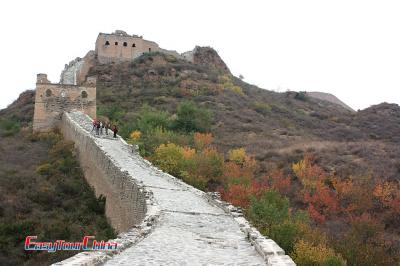How Old is the Great Wall of China?
In the vast land of China, the Great Wall of China, like a winding “giant dragon” stretching between the mountains, is known as one of the seven wonders of the world. For millennia, the Great Wall was built and renovated for the prevention from invasions by the northern nomadic tribes. In this post, we'll unveil how old the Great Wall of China is, and the history behind this prehistoric wonder.
How Old is the Great Wall of China?
The Great Wall of China has a history of over 2,000 years. According to historical data, it was first built in the 7th century BC in the West Zhou Dynasty and has been constructed and expanded many times in subsequent dynasties to its present size and length.
The Great Wall of China was an ancient Chinese defence project, initially built to defend the Chinese Middle Empire against the invasion of nomads from the north, but later it also served the purpose of transportation and trade. For more than two millenniums, it stands still in the North China.
So of course, today the historical significance of the Great Wall of China is not limited to its 2700-year-old age, as it actually has witnessed the history of China for 5000 years.
What is the History behind the Great Wall of China?
The history of the construction of the Great Wall can be traced back to the Western Zhou Dynasty (1046-771 BC.). In order to defend against the attacks of Yanyun (俨狁), a group of nomadic people to the north, the Zhou Dynasty once constructed a series of castles "Liecheng (列城)" for defense.
Among them, the three kingdoms of Qin, Zhao, and Yan in the north confronted with enormous pressure from the brutal nomadic Hun (匈奴) tribes, which had great cavalrymen and bowmen in their troops. It was difficult for the three states to resist their enemies’ lightning attacks. So they built some walls on their northern border for the defense.
In the twenty-sixth year of Qin Shihuang’s reign (221 BC), Qin conquered six other kingdomes, unified the whole country, and established the first vast multi-ethnic empire in Chinese history. In order to maintain and consolidate the security of his state, Qin Shihuang successively adopted a series of major strategic measures for national defense construction, one of which was the large-scale construction of the Great Wall.
In 215 BC, General Meng Tian led an army of 300,000 to attack the Hun tribes (Xiongnu, 匈奴) in the north and occupied a large piece of land to the south of the Yellow River. Then he made his soldiers to connect various sections of the defensive walls built by different states previously. Later more efforts were put into the new constructions of the defense system in the following years. When it was finished, the Qin Great Wall stretched all the way from Lintao (临洮), Gansu to Liaodong, Liaoning with a distance of more than 5000 km. From then on, it has been known as the Great Wall (万里长城,literally, 10000-Li-Long Great Wall, 2 Li equals to 1 km). And this is the very first version of the Great Wall.
According to historical records, Qin Shihuang used nearly a million laborers to build this mammoth defensive system, accounting for one-twentieth of the country's total population at that time. But ironically the project didn’t play its role to make his empire survive longer, which lasted only for 14 years, then it was overthrown by the uprisings all over the country. >> Read more about Qinshihuang and Qin Dynasty
In the following dynasties, most of the rulers ordered to build and renovate the Great Wall intermittently, especially during the Ming Dynasty. To protect the capital - Beijing, the Ming emperors built a sophisticated defense system in the north of the capital city. Currently the famous sections of the Great Wall near Beijing (like Mutianyu Great Wall, Badaling Great Wall and Simatai Great Wall, etc) were mainly constructed in Ming Dynasty. As for how old the Ming Great Wall is? The construction of the Ming Great Wall began in 1368, the year Emperor Zhu Yuanzhang founded the Ming Dynasty, making it 652 years old.